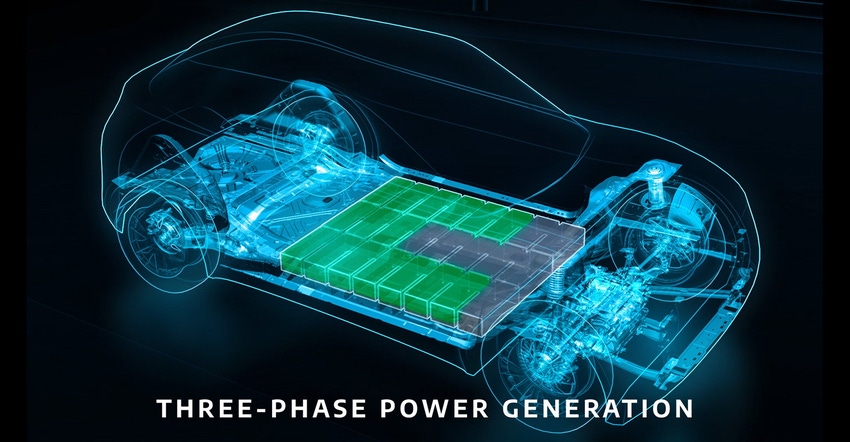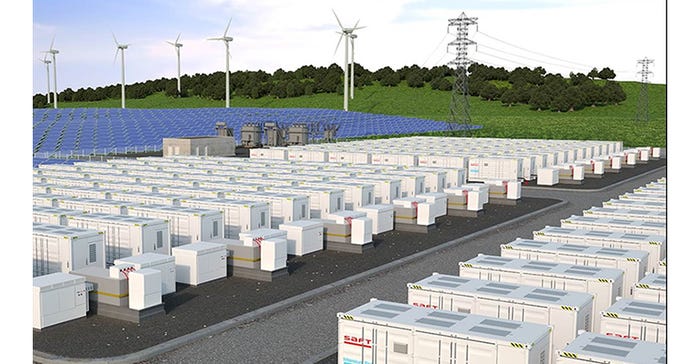Stellantis Unveils Intelligent Battery System, New US Gigafactory Plans
Stellantis and partners have revealed a prototype battery that integrates the inverter and charger functions and announced plans for a new gigafactory in the United States.

Stellantis has been leveraging partnerships with a number of other organizations as it works to reach the challenging goals of its 2030 strategic plan for electrification.
The company, along with the French National Center for Scientific Research (CNRS) and Saft, contributed researchers and engineers to a project team that has now revealed an innovative energy storage battery prototype that integrates inverter and charger functions, resulting in a more efficient, reliable, and cost-effective battery that also saves space in vehicles.
Called the Intelligent Battery Integrated System (IBIS), the collaborative research project introduced a demonstrator that has been operational since summer 2022, marked by numerous patents. The project validates new technical concepts and their control, preparing for automotive and stationary applications, poised to bring a paradigm shift to electric powertrain design in the field of electromobility.
With IBIS, electronic conversion boards for power inversion and charging are strategically placed close to lithium-ion battery cells. A sophisticated control system allows direct production of alternating current for electric motors from the battery.
The focus now shifts to constructing a fully functional prototype vehicle, set to undergo testing on Stellantis development benches, test tracks, and roads, aiming to integrate this technology into Stellantis vehicles by the decade's end.
The IBIS project not only offers potential for reducing vehicle weight and EV powertrain costs through efficient technology but also presents various new features. Additionally, in stationary energy storage and renewable energy integration, Saft, a project partner, can provide enhanced battery availability, optimized energy utilization, and decreased carbon footprint, thanks to the simplified maintenance and upgrade benefits of the IBIS battery architecture.

The synthesis of battery solutions for both electric vehicles and stationary storage bolsters the competitiveness of both offerings, leveraging the economies of scale in expanding markets.
New US gigafactory with partner Samsung SDI is in the works
Stellantis, in collaboration with joint-venture partner Samsung SDI, has also revealed plans to establish a second battery manufacturing facility in the United States, augmenting the existing StarPlus Energy joint venture. This move, outlined in a memorandum of understanding, is set to commence production in 2027, with an initial annual capacity of 34 gigawatt-hours (GWh).
In May 2022, Stellantis and Samsung SDI announced their commitment to build a battery manufacturing facility in Kokomo, Indiana. Targeted to launch in the first quarter of 2025, that first plant will have an annual production of 33 GWh, up from the initial target of 23 GWh.
“This [second] facility will contribute to reaching our aggressive target to offer at least 25 new battery-electric vehicles for the North American market by the end of the decade,” stated Stellantis CEO Carlos Tavares. “We are continuing to add more capacity in the United States together with our great partner Samsung SDI and laying the next steps to reaching our carbon neutrality commitment by 2038.”
“By establishing the joint venture with Stellantis last year, we laid a solid groundwork for marking our presence in North America,” stated Samsung SDI President and CEO Yoon-ho Choi. "The second plant will accelerate our market penetration into the U.S. and help Stellantis push forward the US transition to an era of electric vehicles by supplying the products featuring the highest levels of safety and quality."
As part of the Dare Forward 2030 strategic plan, Stellantis announced plans of reaching 100% of passenger-car battery-electric vehicle (BEV) sales mix in Europe and 50% of passenger car and light-duty truck BEV sales mix in the United States by 2030. To achieve these sales targets, the company is securing approximately 400 GWh of battery capacity. Stellantis is on track to become a carbon net zero corporation by 2038, all scopes included, with single-digit percentage compensation of remaining emissions.
The location of the new facility is currently under review and further details will be shared at a later date.
About the Author(s)
You May Also Like





